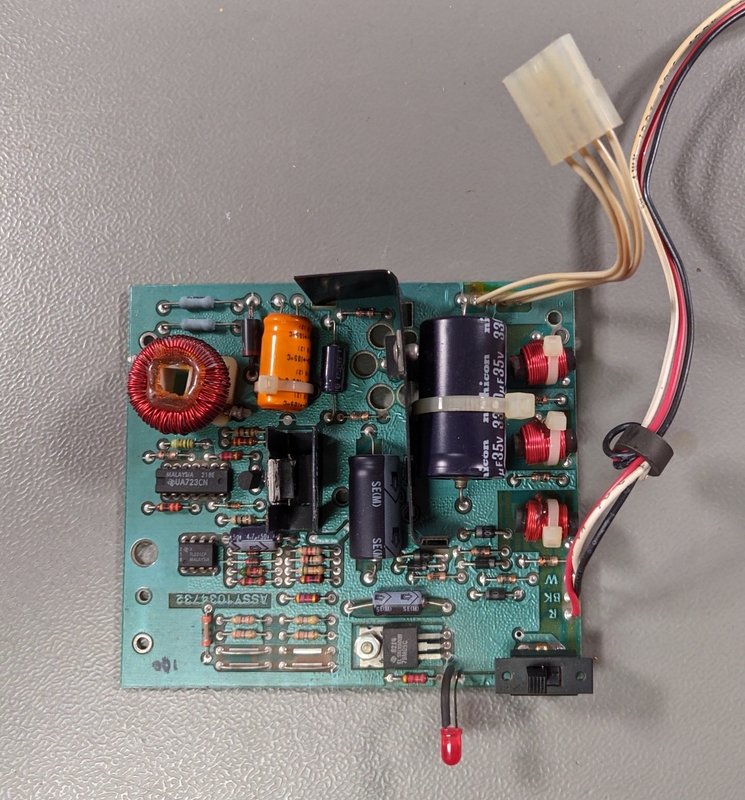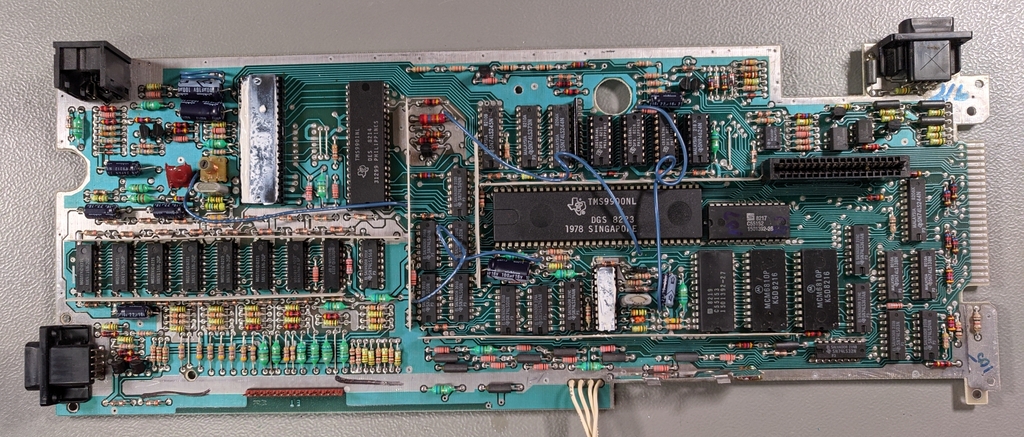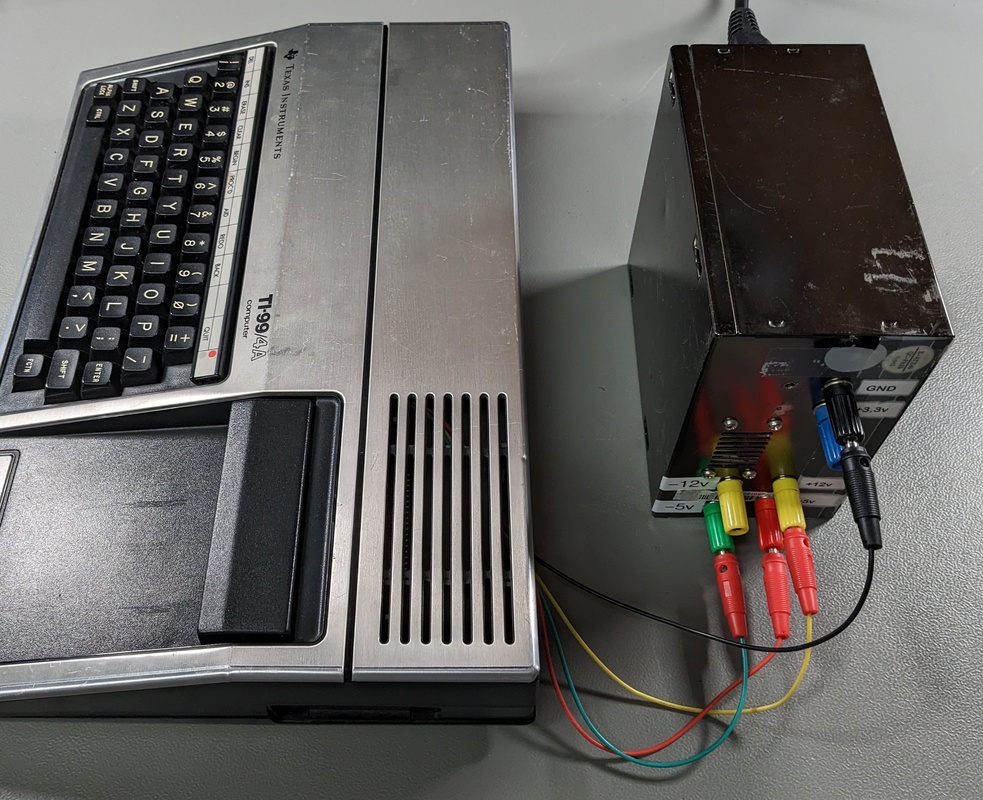Texas Instruments TI-99/4A (B)
I purchased this computer from a local online auction site as untested, together with another TI-99/4A computer and a Peripheral Expansion Box.
It came without any power or video cables.
This is a computer I have long waited to add to my collection, since the internal architecture is very interesting, but they are relatively rare in Europe.
For starters, this is a 16-bit home computer, which was initially released in 1979! (TI-99/4) and this updated variant (TI-99/4A) in 1981, 5 years before the introduction of the IBM PC/AT, which used the 16-bit Intel 80286 CPU and 6 years before the introduction of the Amiga.
But before you start to think that this was some kind of super computer in its day, you should know that it came with some serious limitations:
- The CPU has only three internal registers
- 128 x 16 bit words (256 bytes) of scratch RAM, which is mainly used for stack, etc.
- 16K video RAM, only accessible through the VDP (video IC) and only accessible 1 byte at a time.
In the end, only the tiny amount of scratch RAM and the ROMs are accessed using the 16-bit data bus, all other peripherals and the majority of the RAM are accessed using only an 8-bit data bus, this also includes any side-car expansions.
Work done:
- Initial inspection
- First power-on
- Temporary power supply
Planned work:
- Built a new power supply
Exterior inspection:





Interior inspection:




First power-on
The TI-99 has an interesting power supply design. The logic board itself requires the following voltages:
- +5 volts
- +12 volts
- -5 volts
To supply this, there is a switch mode power supply inside the case, which again is supplied with an external power brick which just contains a transformer to provide 8v and 16v AC. It is this external power brick that I'm missing.
The easiest and safest way to power the computer without the original AC adapter was to use a current limiting bench power supply to provide the DC voltages direct to the logic board.
When I tried powering it on, it worked straight away!
Temporary power supply
For many personal computers from the era with AC bricks, it's possible to just supply DC voltage instead, since it just passes through a rectifier first anyway. But since the built-in power supply uses the 8V AC to generate -5V DC, this is not possible.
Because of this, I decided to bypass the internal power supply completely for the moment and just power the logic board directly using a modified ATX power supply I still had lying around.
